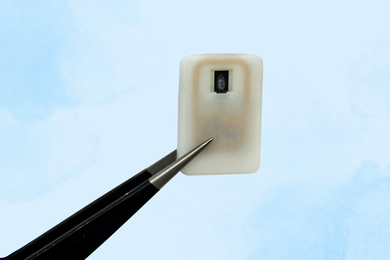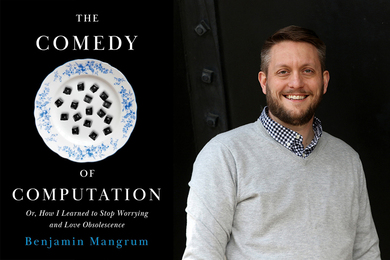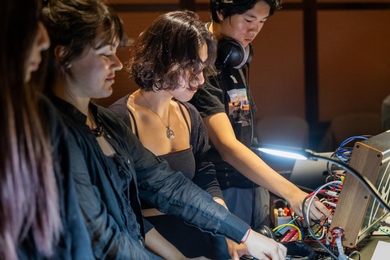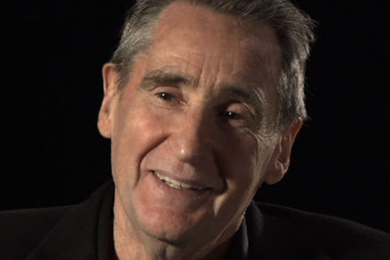The man credited with changing the course of biology and revolutionizing our understanding of genetics has received the $500,000 Lemelson-MIT Prize. The man who designed New England's first residential snow blower and went on to invent medical instruments and surgical equipment received the $100,000 Lifetime Achievement Award for Invention and Innovation.
Leroy Hood and William P. Murphy Jr. were presented with the Lemelson-MIT Program awards on April 24 at a gala in the John F. Kennedy Library and Museum in Boston.
Leroy Hood
In 1986, Leroy Hood of Seattle invented the automated DNA sequencer, which allows scientists to do large-scale, high-speed sequencing of genes. This single piece of equipment was central to efforts by the Whitehead Institute/MIT Center for Genome Research and other research centers to map and sequence the three billion letters comprising the human genome.
"No single person has done more to create the genomics era than Leroy Hood," said Michael E. Phelps, chair of the Department of Molecular and Medical Pharmacology at the University of California School of Medicine, in a letter recommending Hood for the Lemelson award. "He has not only done great science, but has created new science through which many will create new knowledge to the benefit of all mankind."
Hood, 64, also invented a device to sequence proteins and another to synthesize proteins, as well as an automated tool for synthesizing DNA.
He received a B.S. in biology from the California Institute of Technology in 1960, an M.D. from Johns Hopkins University in 1964 and a Ph.D. in biochemistry from Caltech in 1968. After serving on the Caltech faculty for many years, Hood co-founded the Institute for Systems Biology in Seattle in 2000 to integrate biology, medicine and technology to analyze all the elements in a biological system at once, rather than a single gene or protein at a time.
"My prediction is that in 10 to 15 years, we will have identified hundreds of genes that predispose humans to virtually all of the common, late-onset diseases such as cancer, cardiovascular disease, neurological diseases and the like," said Hood. "We will be able to take a blood sample, interrogate the possibility of defects in hundreds of genes, and write out a probabilistic future health history of what is likely to happen to individuals. This is the predictive approach to medicine."
William P. Murphy, Jr.
Murphy, 79, is a pioneer in the application of engineering to medicine. He holds 17 patents for devices ranging from the first disposable medical procedural trays to the first physiologic pacemaker and hollow-fiber artificial kidney. In collaboration with Carl Walter, Murphy developed impermeable plastic blood transfusion bags first used by Murphy on the front lines during the Korean War.
A native of Boston, Murphy's mother, Pearl Harriett Adams, was the first woman licensed as a dentist in Massachusetts. His father William, a hematologist, was a Nobel laureate in medicine.
"I think from the word go I had an interest in medicine," said Murphy, who also had a natural proclivity for machinery and invention. His first machine was a snowblower that he modified from one used by the railroads. After shoveling snow during the long New England winters, a high-school-age Murphy made the snowblower in his home workshop and sold it to a local lawnmower company for $1,500 in the late 1930s.
Murphy received a bachelor's degree in pre-medicine from Harvard University in 1946 and an M.D. from the University of Illinois School of Medicine in 1947. Afterwards, he attended classes at MIT as a nondegree student in the life sciences. He practiced medicine for a few years before founding his first company in 1957, the Medical Development Corp., which later became the Cordis Corp. Murphy and a team at Cordis invented the first physiologic cardiac pacemaker that operated by responding to the heart's rhythms rather than at a fixed rate.
He lives in Miami with his wife, where he said his three major responsibilities are as CEO of two of his companies, Hyperion and Small Parts, and as captain of his steam-powered tugboat.







